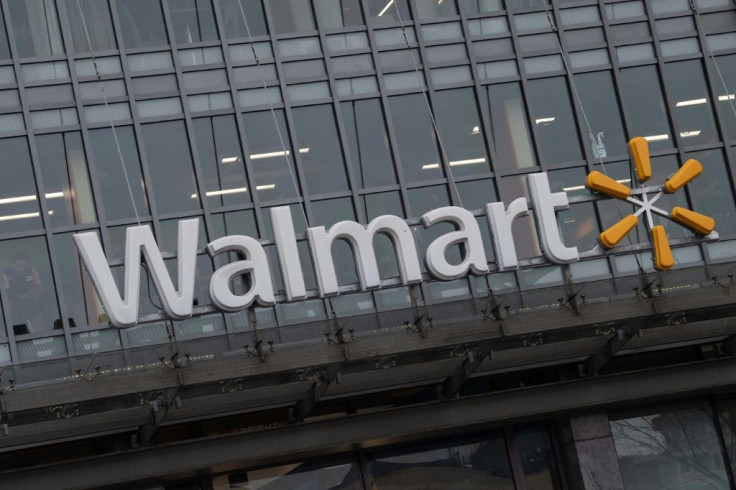Walmart Is Still Losing Ground To Amazon

Walmart's (NYSE:WMT) recently released fourth-quarter earnings report was admittedly not as strong as the retail chain would have liked. CEO Doug McMillon called it, "Not our best."
The company's U.S. comparable-store sales growth slowed from 3.2% in the third quarter to 1.9%. Overall revenue rose 2.1% to $141.7 billion, missing estimates at $142.5 billion. Adjusted operating income fell 3.7% to $5.84 billion, and adjusted earnings per share fell from $1.41 to $1.38, below expectations at $1.43. Lower prices and increased sales from e-commerce weighed on profitability.
Walmart's biggest strength in the quarter will be familiar to followers of the retail giant. U.S. e-commerce sales jumped 35%, led by growth in the online grocery program as Walmart continues to expand online grocery pickup and delivery to new stores. It now has 3,200 stores providing online grocery pickup and 1,600 locations doing grocery delivery. In the quarter, online grocery was a meaningful contributor to e-commerce growth, and e-commerce made up all of the comps growth in the U.S. On a comps basis, grocery sales rose in the low single digits, and the two-year comp was one of the best the company has seen in the last 10 years.
But Walmart also struggled in some key areas that illustrate how it is falling behind rivals like Amazon.com (NASDAQ:AMZN).
A changing of the guard
Among the challenges Walmart noted in the quarter were the month of December, general merchandise, and in-store sales, all areas where the company is competing directly with Amazon.
While Walmart blamed slow December sales on a shorter holiday season due to a late Thanksgiving, Amazon thrived over the holiday season as its fourth-quarter earnings report showed its new one-day Prime shipping program helped drive North American e-commerce sales up 22%, better than the 18% growth it saw in the quarter the year before.
General merchandise has also been a sore spot for Walmart for several quarters. In the fourth quarter, the company reported a slight decrease in general merchandise, citing weakness in toys, media and gaming, and apparel. In two of those three categories, Walmart seemed to underperform rival Target (NYSE:TGT), which reported comps growth of 5% thanks to successful launches of private-label brands like Cat & Jack, a kids' clothing line.
Meanwhile, Walmart's poor performance at the store level, where comps actually fell 0.2% in the quarter at U.S stores, seems to be a direct result of Amazon's influence and bringing more commerce online. Walmart continues to see strong e-commerce growth thanks to its online grocery program, but the vast majority of its sales still come from its stores. The company said it had about $50 billion in online sales globally last year, nearly 10% of its total business, but e-commerce sales are also less profitable than in-store sales.
What's next for Walmart
In the post-earnings investor conference call, McMillon pointed to a few correctable problems, including carrying too much Christmas apparel in December and the lack of a must-have toy during the holiday season.
But Walmart's core business outside of grocery is showing cracks that haven't been seen in years. For 2020, McMillon said, the company would focus on improving its general merchandise business, expanding its profit margin in e-commerce, and other key initiatives like online grocery and driving store traffic.
For the year ahead, the retailer expects 2.5% comps growth in the U.S. and 30% e-commerce growth, still solid numbers but a modest slowdown from 2019. On the bottom line, it sees adjusted EPS of $5.00 to $5.15, up 1.5% to 4.5% from 2019. While the company is still making progress, its online grocery program is maturing and other e-commerce initiatives like free two-day delivery have been bested by Amazon. Its boldest e-commerce ideas, like its Jetblack personal-shopping service and acquisitions like men's clothier Bonobos, have mostly disappointed.
It now seems that the retailer's recent growth cycle that began with McMillon's arrival, the launch of online grocery, and the Jet.com acquisition may have peaked. For now, Walmart's most-impressive growth days may be behind it.
This article originally appeared in the Motley Fool.
Jeremy Bowman owns shares of Amazon and Target. The Motley Fool owns shares of and recommends Amazon. The Motley Fool has a disclosure policy.




















